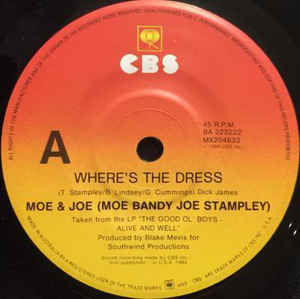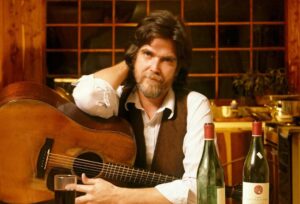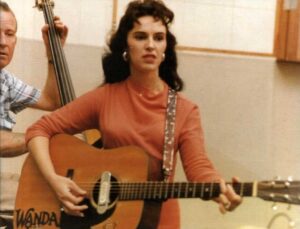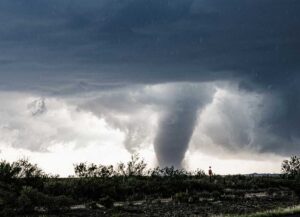I’ve never been a big fan of music videos, at least not the type that dramatizes the lyrics. And I don’t take a liking to many songs written with the sole purpose of being made into a video — to me, that’s screenwriting, not songwriting. After all, instrumentals alone can create a vision in a listener’s mind. I’ve mentioned the “clickity-clack” beat of Merle Haggard’s “Movin’ On” as an example of how the tempo gives rise to thoughts of the highway before the lyrics even begin.
But every once in a while, especially in the 1980s, when country music was trying to capitalize on the MTV craze, country musicians offered a couple of videos that were funny enough to make me laugh at least twice before I started losing interest. When it came to country comedy videos, few were as successful as those of Moe Bandy and Joe Stampley.
A lot of people remember “Moe and Joe,” as they were commonly known, for their videos. But both had successful solo careers before joining to record seven albums, and they continued with their solo efforts during and after the collaborations. As a duo, the two singers built an image based on their first single release, the No. 1 hit, “Just Good Ol’ Boys.” It seemed the image struck a chord with country music fans who have always so closely identified with the artists and songs they sing.
Moe Bandy was born in Meridian, Mississippi, but was transplanted to San Antonio at age 6. The move fueled Moe’s interest in honky-tonk music, as well as a calling to rodeo for both Moe and his brother, Mike. As teens, both competed in rodeos across Texas, but their careers eventually diverged. Mike went on to be the professional rodeo star, while Moe pursued his musical career. Contrary to popular belief inspired by Moe Bandy’s signature song, “Bandy the Rodeo Clown,” he never performed as a clown (or bullfighter, as they are now known).
After taking his first shot at a music career in 1962, it would be 12 years before Bandy’s efforts paid off. His first charting single, “I Just Started Hating Cheating Songs Today,” became the prototype for Bandy’s early career. He became the stereotypical country musician whose discography consisted almost exclusively of “cheatin’ and drinkin’” songs. He topped off the first phase of his career in 1979 when he and Janie Fricke teamed up for the No. 2 hit, “It’s a Cheatin’ Situation,” a duet that took home Song of the Year honors from the Academy of Country Music. Throughout his career, Bandy has recorded 40 solo albums and released 14 Top 10 singles.
Joe Stampley, also a native of the Deep South, was raised in Northwest Louisiana. Born just a year before his future singing partner, Stampley began his musical career much differently than Bandy. He started with a rock band, The Uniques. The band recorded just four albums and released two moderately successful singles between 1965 and 1970. When his rock career fizzled, Stampley followed the path of many other southern rock musicians: He went country.
Beginning in 1971, Stampley began a country career during which he quietly turned out 22 albums and 14 Top 10 solo hits, perhaps the most popular being the trucking song, “Roll On, Big Mama.” But when the ’80s arrived, Stampley’s solo career took a back seat to the success of the Moe Bandy and Joe Stampley duo. The “good ol’ boys’” reputation came to a head in 1984 when the duo recorded — and, more notably, made a video — of a parody song, “Where’s the Dress.”
In early 1984, the most popular song in the world was “Karma Chameleon,” performed by the British band Culture Club and its prominent leader Boy George. The song appeared, most often in the No. 1 spot, on charts worldwide. Whether it was the flamboyant Boy George, the catchy tune or the music video accompanying the song, “Karma Chameleon” appealed to music fans of all sorts.
The music video accompanying “Karma Chameleon,” ironically set in Moe Bandy’s native Mississippi, colorfully depicted everything that Moe, Joe and most “good ol’ boys” were not. So, inspired by a song written by Stampley’s son, Moe and Joe decided to parody the worldwide hit (and hoped to make a heap of money in the process). “Where’s the Dress” became Moe and Joe’s answer to Boy George.
Before examining “Where’s the Dress,” it should be noted that 1984 was much different than 2021. Frankly, it’s doubtful the song would be written today, much less released in video form. In today’s world, one of Joe Stampley’s early lines wouldn’t even pass the smell test: “It was a man dressed like a woman, and he had a boy’s name.” If one applies 2021 standards to 1984, the entire “Where’s the Dress” episode ranks high on the list of offensive moments in country music history.
In any event, before passing judgment, I suggest you first watch the “Karma Chameleon” video; then follow up with “Where’s the Dress.” This is a case where the visuals provided by the videos are needed to grasp the point Moe and Joe tried to make.
Moe and Joe pose as truck drivers in the video, roles they take in several of the duo’s songs. The two lament the fame and riches of Boy George and their belief that he’s making it big by, essentially, “cross-dressing.” But the gist of “Where’s the Dress” is likely best described by music journalist Nick Murray in the Feb. 1, 2018, issue of Rolling Stone Magazine:
“Stranger … even, was the duo’s song “Where’s the Dress,” a Boy George-inspired novelty hit in which Moe and Joe decide to dress in drag — become “country queens” — in a bid to revitalize their careers. The plan goes awry when they enjoy gender-bending so much that it instead puts their careers in jeopardy, and the music video ends with the conservative Roy Acuff using the bow of his fiddle to beat the mascara-wearing singers off the Opry stage. (In ‘Lucky Me,’ [Moe Bandy’s autobiography], Moe credits this episode mostly to Joe.)”
It’s hard to say if “Where’s the Dress” hurt Moe and Joe as a duo. They did release three more songs from the same album, but none became hits. “Where’s the Dress” would be their last hit together before the duo stopped recording, noting their solo careers suffered. But in a 1984 interview, Joe Stampley was defensive in saying, “(‘Where’s the Dress’) wasn’t done as a put-down to Boy George. It’s a novelty song that wonders whether two country bumpkins could (dress that way) in a honky-tonk.” He added that Boy George “is a talent … genius … and sharp.”
So, the entire “Where’s the Dress” episode was short-lived and didn’t cause a rift in music like it might today. At least not a major rift.
Boy George and his manager did file suit against Bandy and Stampley for copyright infringement. The suit didn’t seek damages for using the likeness of Boy George or Culture Club, but for using the same guitar rift and harmonica lick written into “Karma Chameleon.” Bandy later said, “That little mess-up cost us $50,000.”
Until next time, let me remind you: When you listen to classic country music, you need to go back in time and apply the standards of the day to your criticism, not today’s standards. After all, what could anyone expect from Moe and Joe? Neither of the two was a copyright lawyer. Moe and Joe were “just good ol’ boys.”
Since retiring from a career as an outdoor recreation professional from the State of Arkansas, Kris Rutherford has worked as a freelance writer and, with his wife, owns and publishes a small Northeast Texas newspaper, The Roxton Progress. Kris has worked as a ghostwriter and editor and has authored seven books of his own. He became interested in the trucking industry as a child in the 1970s when his family traveled the interstates twice a year between their home in Maine and their native Texas. He has been a classic country music enthusiast since the age of nine when he developed a special interest in trucking songs.







